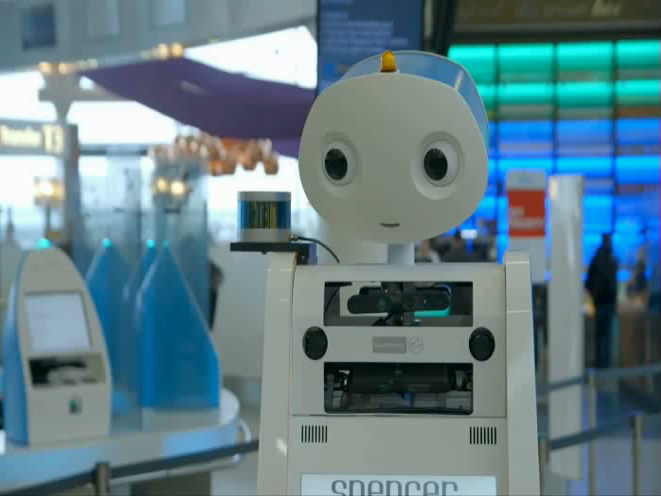Humans retain upper hand in rise of airport machines
26 June, 2019
4 min read


The latest report on the global bid to automate airports shows that humans have yet to succumb to the rise of the machines but suggests resistance is futile.
A survey of 2000 travelers by air travel data company OAG found that many still preferred human interaction in the majority of airport functions.
The exceptions were ticketing and check-in where the preference towards machines was about two to one in favor.
However, humans won the day with baggage, security, concierge services, boarding, airport concessions and in-flight services.
OAG’s advice to airports was not to automate too much, too fast but the survey made clear winter is coming for those who still prefer people to machines.
“While these numbers are somewhat surprising, the shift to automation continues across airports,’’ the report said
“ Digging deeper into the numbers, millennials prefer automation more than the general population in every area except for security.
“Specifically, millennials are 30 percent more likely to prefer automated airport concessions and retail and in-flight services compared to travelers 50 years and older.
READ: United aims high for Apollo 11 anniversary.
“Given that preference levels for automation in several key areas, including security and baggage, were within 10 percentage points of human customer service, OAG expects positive sentiment toward automation to climb over the next few years – and ultimately become the clear preference for most travelers.”
A surprising result was almost 60 percent of those surveyed would let airports, airlines and other travel providers track their location through a device if the data was used to redeploy staff and cut down on wait times and queues.
About half of the respondents reported spending at least 45 minutes in line at the airport while just over a fifth spent at least an hour.
When asked where they spent the most time waiting, 59 percent said security followed by boarding lines (20 percent) and check-in and baggage (16 percent).
Travelers were eager for new technology such as CT scanners that allow them to leave electronics and other items in their bag to improve the security process but few wanted it fully automated.
The exception was business travelers, where the preference for automation was 23 percent higher than for leisure travelers.
There were also some “simple wins” for airports: 40 percent of passengers identified the availability of more loading zones to allow them to prepare their bags for scanning as the process that would speed up and streamline security the most. Only 29 percent said biometrics.
“When it comes to the technology travelers believe will improve and streamline their experience the most, the number one answer wasn’t biometrics, robots or any other emerging technologies,'' OAG said.
"It was something much simpler: in-airport turn-by-turn GPS directions for navigating terminals and gates (54 percent),’’ the report said.
The survey also asked how travelers spent their time while waiting for a flight.
Only 7 percent said they spent all their time in restaurants, bars and retail shops, although 32 percent said their time was evenly split between the gate, shops and restaurants.
The biggest proportion — 45 percent — said they spent the time sitting, relaxing and working at the gate.
They said they would be more likely to leave the gate if they had more consistent, proactive and trustworthy flight information.
One area OAG suggested was ripe opportunities for airports and food and beverage companies were gate-side delivery and pre-ordering through mobiles.
The survey found only 6 percent had pre-ordered food or drink for pick-up through a mobile device but two thirds would consider doing it in the future.
Just 9 percent had tried gate-side delivery but 62 percent said they would be willing to give it a go.
Get the latest news and updates straight to your inbox
No spam, no hassle, no fuss, just airline news direct to you.
By joining our newsletter, you agree to our Privacy Policy
Find us on social media
Comments
No comments yet, be the first to write one.

